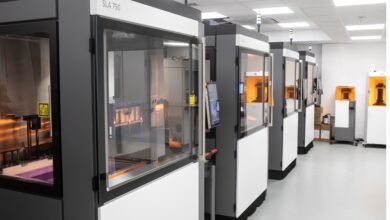How to Use AI Tools to Boost Productivity in 2025
AI Tools 2025 can transform your workflow. Discover top AI solutions to automate tasks, save time & maximize efficiency this year.

AI tools are transforming the way we work, making 2025 a pivotal year for maximizing productivity. From automating repetitive tasks to enhancing decision-making with real-time data insights, artificial intelligence is reshaping industries worldwide. Whether you’re a business leader, freelancer, or student, leveraging AI-powered solutions can help you work smarter, faster, and more efficiently. This guide explores the most effective AI Tools and strategies to help you stay ahead in an increasingly competitive digital landscape.
The rapid evolution of machine learning, natural language processing (NLP), and automation has unlocked new possibilities for efficiency. With AI-driven assistants, predictive analytics, and smart project management systems, professionals can eliminate manual workloads and focus on high-impact tasks. In this article, we’ll dive into the best AI tools for productivity in 2025, providing actionable tips to integrate them seamlessly into your workflow. Whether you’re looking to streamline communication, optimize time management, or enhance creativity, AI has a solution.
How to Use AI Tools to Boost Productivity in 2025
Automating Repetitive Tasks with AI
One of the biggest advantages of AI tools is their ability to automate repetitive tasks. Whether it’s data entry, email responses, or file organization, AI-powered software like Zapier and Make (formerly Integromat) can handle mundane activities with precision. By setting up workflow automations, professionals can free up hours each week, allowing them to focus on strategic decision-making. For instance, AI chatbots such as ChatGPT and Google Bard can manage customer inquiries, schedule appointments, and even draft reports. These tools use natural language processing to understand and respond to queries in real time, reducing the workload on human teams.
Enhancing Decision-Making with Predictive Analytics
In 2025, businesses are increasingly relying on predictive analytics to make data-driven decisions. AI tools like Tableau, Power BI, and Google Analytics AI analyze vast datasets to forecast trends, customer behavior, and market shifts. By leveraging machine learning models, these platforms provide actionable insights that help companies optimize operations and reduce risks. For example, sales teams can use AI-driven CRM systems like Salesforce Einstein to predict which leads are most likely to convert. Similarly, financial analysts utilize AI-powered forecasting tools to assess investment opportunities with higher accuracy.
Optimizing Project Management with AI
Managing complex projects requires coordination across multiple teams, and AI project management tools are making this easier than ever. Software like ClickUp, Asana, and Trello now integrate AI task prioritization, automatically assigning deadlines based on workload and urgency. Additionally, AI-powered collaboration tools such as Slack and Microsoft Teams use smart algorithms to organize conversations, flag important messages, and suggest relevant documents.
Streamlining Communication with AI-Powered Writing Assistants
Clear and effective communication is crucial for productivity, and AI writing tools are transforming how we create content. Platforms like Grammarly, Jasper AI, and Copy.ai help professionals draft error-free emails, reports, and marketing copy in seconds. These tools use Natural language generation (NLG) to suggest improvements, correct grammar, and even adjust tone for different audiences. Moreover, AI transcription services such as Otter.ai and Rev convert voice recordings into text, making meetings and interviews more accessible.
Personalizing Learning and Skill Development
Continuous learning is essential in 2025, and AI-driven education platforms are making skill development more personalized. Tools like Coursera, Udemy, and Khan Academy use adaptive learning algorithms to tailor courses based on individual progress. This ensures learners receive content that matches their pace and comprehension level. Furthermore, AI-powered language apps such as Duolingo and Babbel adjust lessons in real time, focusing on areas where users struggle.
Future Aspects of Using AI Tools to Boost Productivity
Hyper-Personalized AI Assistants
AI assistants will evolve into proactive work partners, analyzing habits to auto-draft emails, restructure workflows, and sync with wearables. They’ll predict needs before you do, like scheduling focus blocks when your energy peaks. Expect voice-controlled AR interfaces for hands-free task management.
Autonomous Project Execution
AI will self-manage teams by assigning tasks, negotiating deadlines, and resolving workflow conflicts. Tools like Asana AI will handle logistics while humans focus on strategy. This shift enables 24/7 progress with AI as the ultimate project coordinator.
Emotionally Intelligent AI
Biometric-sensing AI will monitor stress via webcam/wearables, adjusting workloads and suggesting breaks. Platforms like Microsoft Viva will blend productivity with mental health support, reducing burnout through real-time wellbeing optimization.
Predictive Automation
AI will move beyond simple automation to prevent inefficiencies preemptively. Email systems will prioritize based on urgency AND your current focus level, while design tools auto-generate assets by analyzing brand history.
Deep Work Optimization
Next-gen focus tools will become AI coaches, using neuroscience to create ideal work conditions. They’ll mute distractions during high-productivity windows and adjust environments (lighting/music) via EEG headset integrations.
No-Code AI Builders
Platforms like Bubble AI will let anyone create custom productivity apps through natural language commands. Need a workflow automator? Describe it, and AI assembles the tool instantly – no programming required.
Unified AI Ecosystems
Productivity tools will operate as interconnected systems. Meeting AI (Fireflies) will auto-update CRMs, while writing tools pull live data from spreadsheets to generate reports. Zapier 2.0 will enable seamless cross-platform AI orchestration.
Ethical AI Frameworks
As AI handles sensitive tasks, new standards will emerge for transparency and bias control. Tools will explain decisions in plain language and allow human override, balancing efficiency with accountability.
AI-Powered Skill Augmentation
Real-time upskilling will become seamless as AI identifies knowledge gaps during work. Your spreadsheet might teach advanced formulas as you use it, while presentation tools suggest storytelling techniques mid-creation.
Read More: How to Set Up a Secure Home Network Without an IT Degree
Conclusion
AI tools have undeniably become the cornerstone of productivity in 2025, offering unprecedented efficiency across all professional domains. By automating routine tasks, enhancing decision-making with data-driven insights, and streamlining collaboration, these intelligent solutions are helping individuals and businesses achieve more in less time. As we continue to embrace these advancements, the key lies in strategically implementing the right AI Tools that align with specific needs whether it’s workflow automation, smart scheduling, or AI-augmented creativity.
Looking ahead, the evolution of AI Tools promises even greater innovations, from hyper-personalized virtual assistants to predictive task management systems. To stay competitive in this fast-changing landscape, professionals must remain adaptable, continuously exploring new ways to integrate AI into their daily operations. By doing so, they can unlock higher levels of efficiency, reduce burnout, and focus on what truly matters driving growth and innovation in 2025 and beyond. The future of work is here, and it’s powered by artificial intelligence.
FAQs
What are the best AI tools for productivity in 2025?
Top choices include ChatGPT for content creation, Notion AI for task management, Zapier for automation, Otter.ai for meeting notes, and Grammarly for error-free writing.
How can AI tools save time in daily work?
They automate repetitive tasks (like emails and data entry), provide smart scheduling, generate instant reports, and offer real-time collaboration features to streamline workflows.
Are AI productivity tools secure for business use?
Most enterprise-grade AI tools (like Microsoft 365 Copilot and Salesforce Einstein) have robust security, but always check compliance with your industry’s data protection standards.
Can AI completely replace human workers?
No AI enhances productivity by handling routine tasks, but human creativity, strategy, and emotional intelligence remain irreplaceable in decision-making and innovation.
How do I start integrating AI tools into my workflow?
Begin with one AI Tools(like Trello’s AI automation or Canva’s AI design assistant), learn its features, then gradually expand to other AI solutions based on your needs.






